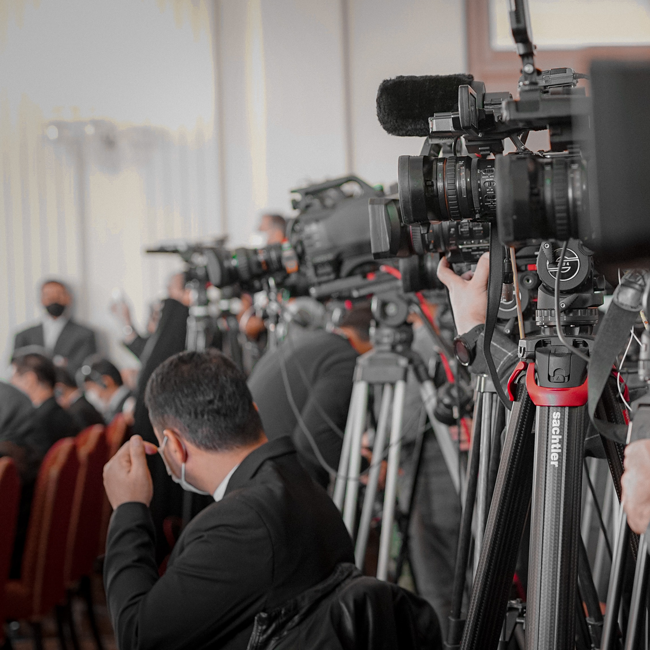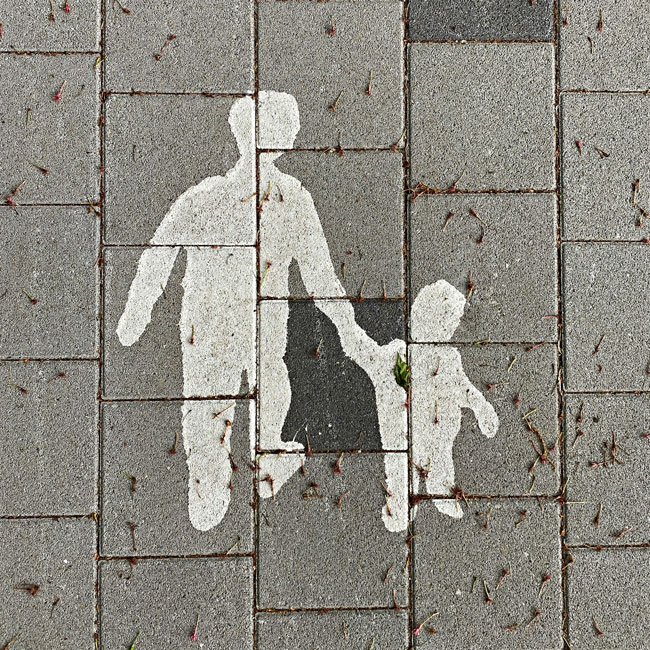How to respectfully disagree

How to respectfully disagree
Opinion + AnalysisRelationships
BY Simon Longstaff The Ethics Centre 2 OCT 2015
Why do we find it so hard to discuss difficult issues? We seem to have no trouble hurling opinions at each other. It is easy enough to form into irresistible blocks of righteous indignation. But discussion – why do we find it so hard?
What happened to the serious playfulness that used to allow us to pick apart an argument and respectfully disagree? When did life become ‘all or nothing’, a binary choice between ‘friend or foe’?
Perhaps this is what happens when our politics and our media come to believe they can only thrive on a diet of intense difference. Today, every issue must have its champions and villains. Things that truly matter just overwhelm us with their significance. Perhaps we feel ungainly and unprepared for the ambiguities of modern life and so clutch on to simple certainties.
Today, every issue must have its champions and villains. Perhaps we feel ungainly and unprepared for the ambiguities of modern life and so clutch on to simple certainties.
Indeed, I think this must be it. Most of us have a deep-seated dislike of ambiguity. We easily submit to the siren call of fundamentalists in politics, religion, science, ethics … whatever. They sing to us of a blissful state within which they will decide what needs to be done and release us from every burden except obedience.
But there is a price to pay for certainty. We must pay with our capacity to engage with difference, to respect the integrity of the person who holds a principled position opposed to our own. It is a terrible price we pay.
The late, great cultural theorist and historian, Robert Hughes, ended his history of Australia, The Fatal Shore, with an observation we would do well to heed:
The need for absolute goodies and absolute baddies runs deep in us, but it drags history into propaganda and denies the humanity of the dead: their sins, their virtues, their failures. To preserve complexity, and not flatten it under the weight of anachronistic moralising, is part of the historian’s task.
And so it is for the living. The ‘flat man’ of history is quite unreal. The problem is too many of us behave as if we are surrounded by such creatures. They are the commodities of modern society, the stockpile to be allocated in the most efficient and economical manner.
Each of them has a price, because none of them is thought to be of intrinsic value. Their beliefs are labels, their deeds are brands. We do not see the person within. So, we pitch our labels against theirs – never really engaging at a level below the slogan.
It was not always so. It need not be so.
I have learned one of the least productive things one can do is seek to prove to another person they are wrong. Despite knowing this, it is a mistake I often make and always end up wishing I had not.
The moment you set out to prove the error of another person is the moment they stop listening to you. Instead, they put up their defences and begin arranging counter-arguments (or sometimes just block you out).
The moment you set out to prove the error of another person is the moment they stop listening to you.
Far better it is to make the attempt (and it must be a sincere attempt) to take the person and their views entirely seriously. You have to try to get into their shoes, to see the world through their eyes. In many cases people will be surprised by a genuine attempt to understand their perspective. In most cases they will be intrigued and sometimes delighted.
The aim is to follow the person and their arguments to a point where they will go no further in pursuit of their own beliefs. Usually, the moment presents itself when your interlocutor tells you there is a line, a boundary they will not cross. That is when the discussion begins.
At that point, it is reasonable to ask, “Why so far, but no further?” Presented as a case of legitimate interest (and not as a ‘gotcha’ moment) such a question unlocks the possibility of a genuinely illuminating discussion.
To follow this path requires mutual respect and recognition that people of goodwill can have serious disagreements without either of them being reduced to a ‘monstrous’ flat man of history. It probably does not help that so much social media is used to blaze emotion or to rant and bully under cover of anonymity. People now say and do things online that few would dare if standing face-to-face with another.
It probably does not help that we are becoming desensitised to the pain we cause the invisible victims of a cruel jibe or verbal assault. Nor does it help that the liberty of free speech is no longer understood to be matched by an implied duty of ethical restraint.
I am hoping the concept of respectful disagreement might make a comeback. I am hoping we might relearn the ability to discuss things that really matter – those hot, contentious issues that justifiably inflame passions and drive people to the barricades. I am hoping we can do so with a measure of goodwill. If there is to be a contest of ideas, then let it be based on discussion.
Then we might discover there are far more bad ideas than there are bad people.
Ethics in your inbox.
Get the latest inspiration, intelligence, events & more.
By signing up you agree to our privacy policy
You might be interested in…
Big thinker
Relationships
Big Thinker: Steven Pinker
Opinion + Analysis
Politics + Human Rights, Relationships
Whose home, and who’s home?
Opinion + Analysis
Health + Wellbeing, Relationships
How to break up with a friend
Explainer
Politics + Human Rights, Relationships
Ethics Explainer: The Harm Principle
BY Simon Longstaff
Simon Longstaff began his working life on Groote Eylandt in the Northern Territory of Australia. He is proud of his kinship ties to the Anindilyakwa people. After a period studying law in Sydney and teaching in Tasmania, he pursued postgraduate studies as a Member of Magdalene College, Cambridge. In 1991, Simon commenced his work as the first Executive Director of The Ethics Centre. In 2013, he was made an officer of the Order of Australia (AO) for “distinguished service to the community through the promotion of ethical standards in governance and business, to improving corporate responsibility, and to philosophy.” Simon is an Adjunct Professor of the Australian Graduate School of Management at UNSW, a Fellow of CPA Australia, the Royal Society of NSW and the Australian Risk Policy Institute.
BY The Ethics Centre
The Ethics Centre is a not-for-profit organisation developing innovative programs, services and experiences, designed to bring ethics to the centre of professional and personal life.
You can’t save the planet. But Dr. Seuss and your kids can.

You can’t save the planet. But Dr. Seuss and your kids can.
Opinion + AnalysisClimate + EnvironmentRelationships
BY Steve Vanderheiden The Ethics Centre 30 SEP 2015
Dr. Seuss’ The Lorax explores the consequences of deforestation and the environmental costs of development. It concludes with the Once-ler, the narrator of the story who is principally responsible for deforestation of the decimated Truffula tree, entrusting its final seed to a young boy. He implores the child, “Grow a forest. Protect it from axes that hack. Then the Lorax and all of his friends might come back.”
The Once-ler, wracked by guilt for his complicity in this environmental disaster, passes along responsibility for reversing damage done by his generation to a child. The Lorax suggests the young take on duties of planetary stewardship where adults have failed.
Is this fair? Perhaps the generation responsible for mucking up the planet has lost its moral authority to try and save it. So the task of conservation is inherited by those with a longer-term stake in its future.
That adults might vest hope for a better planet in our children is both edifying and deeply troubling. Edifying because the environmental record of the world’s children bests that of adults by default. The young have not yet begun to reproduce the patterns of behavior that implicate their parents – resource depletion, biodiversity loss, climate change…
Troubling because they may reproduce them in future. We cannot realistically expect young people socialised into a world of willful environmental neglect to behave much differently than their parents have. Adults cannot so easily absolve themselves of the responsibility of addressing environmental harm they have caused.
Rather than saving the planet, a more modest objective might be to refrain from making it much worse for our children. Even this is a daunting prospect. Patterns of energy use dependent on fossil fuels all but guarantee that global temperatures will continue to rise. For most, climate change is no longer a debate about “if” but “how severe?”
We may still hope to make the planet better for our children in other ways. For instance, by adding to the richness of human culture and the stock of beneficial technologies. When it comes to climate though, a more appropriate aim might be to refrain from chopping that last Truffula tree. To preserve our remaining forests so our children might be able to see the proverbial Brown Bar-ba-loots, Swomee-Swans or Humming Fish in their native habitats rather than natural history museums.
Doing this will be challenging. It will require an often uncomfortable reflection on what drives global environmental degradation. In Seuss’ tale the insatiable demand for thneeds – the ultimate commodity – drives the Truffula deforestation. This implicates our heedless consumerism in the causal chain of degradation alongside the Once-ler.
When we consume things we don’t need, and when the industry around these commodities is obviously unsustainable despite our obliviousness to this fact, we contribute to resource depletion. What’s more, we add to the attitudes and norms that suggest this is a private matter, answerable only to private consumer preferences and not larger public concerns for equity or sustainability.
Worst of all, we teach our children to do the same.
The first step in reducing our negative impact upon the planet must be to understand how and where we make the impact we do. We need to understand alternatives that yield comparable value to us with a lighter toll upon the planet. Consuming more conscientiously will leave our children a better planet and make them better citizens of it. Though it requires us to consume differently and less.
Thinking about the long-term consequences of our choices will also help. We cannot plausibly claim to value our children’s future while discounting the future value of current investments in sustainable infrastructure or future costs of unsustainable current practices.
To help make better children for our planet we must teach them that out of sight is not out of mind.
Our deeds announce our concern for the welfare of future generations more accurately than our words or thoughts. Thinking about such choices must be accompanied by some changes in course. Citizens must demand better public choices be made rather than acquiescing to worse ones as unavoidable products of political inertia or inviolable market forces.
The tendency to shift problems across borders is no less insidious than passing them to our children or grandchildren. To help make better children for our planet we must teach them that out of sight is not out of mind.
As role models for our children our success in stopping environmental harm will matter less than our sincerity in the efforts we make. If we honestly try to maintain the planet, our example will help make them into the kind of people our planet needs.
For as the Once-ler interprets the Lorax’s cryptic final word, “UNLESS someone like you cares a whole awful lot, nothing is going to get better. It’s not.”
Ethics in your inbox.
Get the latest inspiration, intelligence, events & more.
By signing up you agree to our privacy policy
You might be interested in…
Opinion + Analysis
Relationships
Violent porn and feminism
Opinion + Analysis
Health + Wellbeing, Relationships
Want to live more ethically? Try these life hacks
Opinion + Analysis
Relationships, Climate + Environment
Blindness and seeing
Opinion + Analysis
Business + Leadership, Relationships
The role of the ethical leader in an accelerating world
BY Steve Vanderheiden
Steve Vanderheiden is Associate Professor of Political Science and Environmental Studies at University of Colorado Boulder and Professorial Fellow with the Centre for Applied Philosophy and Public Ethics (CAPPE) at Charles Sturt University.
BY The Ethics Centre
The Ethics Centre is a not-for-profit organisation developing innovative programs, services and experiences, designed to bring ethics to the centre of professional and personal life.
Defining mental illness – what is normal anyway?

Defining mental illness – what is normal anyway?
Opinion + AnalysisHealth + Wellbeing
BY Anke Snoek The Ethics Centre 22 SEP 2015
The fact that mental illness remains poorly understood is not particularly surprising. Even the authoritative Diagnostic and Statistical Manual of Mental Disorders struggles to reach a defensible definition – and it’s in its fifth edition!
Mental illness is often perceived as a chemical imbalance in the brain. This certainly accounts for an element of mental illness, but not all of it. We need to recognise that our definitions of illness are determined as much by our interpretations of those physical or mental changes as they are by the changes themselves.
We define illness based on whether a physical or mental change is incompatible – that is, maladaptive – with a person’s environment. Because our environments are both social and physical, our definitions entail value judgements of how an individual should behave.
The late Oliver Sacks described an island on which hereditary total colour blindness meant the majority of the population were born colour-blind. As such, communal practices reflect the needs of the majority – colour-blind people. The community is most active at dusk and dawn because the light at those times provides the best vision. Non-colour blindness is maladaptive on the island because social practices are designed around colour blindness.
This highlights the cultural influences involved in defining illness. In the case of mental illness, the normative element – what society sees as acceptable or unacceptable – is often more controversial and difficult to identify.
Each era tends to have a mental illness du jour, which seems to emerge as a product of social changes and the incompatibility of certain behaviours with those changes. One era’s shaman is another’s schizophrenic.
In the 1960s a movement called “anti-psychiatry” emerged under the influence of French philosopher Michel Foucault. The movement critiqued the assumptions underlying our concept of mental illness.
Anti-psychiatrist Thomas Szaz considers a person who believes he is Napoleon. To diagnose a disorder, the clinician would need to prove the patient is not Napoleon. Because Western society does not tend to embrace the idea of reincarnation, the man’s belief is maladaptive to his environment. But it would not be so everywhere. Societies with a firm faith in reincarnation, for instance, may not see the man’s beliefs as evidence of mental illness. John of God, a faith healer in Brazil, claims over 20 entities including King Solomon use his body as a healing vessel. Rather than being institutionalised, he is venerated.
In these cases social perception seems to be influencing our definitions of mental illness. Many will argue that the illnesses themselves still exist, but that cultural beliefs simply lead to a failure to diagnose. This may be true, but other cases are less clear. In some situations, culture itself may be the cause of mental illness.
Take the sculptress Camille Claudel. She decided to pursue a career in arts – an unusual decision in the 19th century. Claudel fell in love with the pre-eminent sculptor Auguste Rodin. She became his lover, and they started working together.
Claudel rose from his student to his equal, but Rodin’s reputation distracted from her own achievements. Over time, this led to feelings of exploitation, and paranoia. She was forcibly admitted to a mental institution, where she lived for 30 years.
In a letter, her brother explained to her, “genius doesn’t become women”. Was Claudel suffering a psychological illness, or reacting in the way we’d expect of someone continually overlooked and exploited?
The story of “hysteria” is a less tragic case. In the 19th century, European women began to challenge oppressive, patriarchal value systems. They became depressed, unruly, and threw tantrums. Sexual adventures and explorations were considered symptoms of hysteria.
Some believed hysteria to be a symptom of women’s maternal yearnings. Later, Sigmund Freud suggested hysteric women were sexually unfulfilled, so the prevailing treatment for hysteria became the massage of female genitals by doctors – physician-assisted masturbation.
Of course, we now know hysteria isn’t real. The diagnosis pathologised – made abnormal – women’s reasonable expectation for political freedom and sexual autonomy.
This highlights the fact that each era tends to have a mental illness du jour, which seems to emerge as a product of social changes and the incompatibility of certain behaviours with those changes. One era’s shaman is another’s schizophrenic.
Joan of Arc’s claims to hear the voice of God weren’t widely disputed. Today, we’d suspect she was in need of psychological intervention. Clare of Assisi lived an ascetic life to honour God. She spent the last 27 years of her life in bed, too weak to move. Today, she’d be treated for anorexia nervosa – instead, she was named as a saint.
What is our mental illness du jour? Dutch scientist and author Trudy Dehue describes a “depression epidemic”. She argues many cultures today fail to allow for the possibility people might not always be happy. Social norms make being happy a kind of imperative – “thou shalt be happy”.
The identification of new disorders and increasing diagnoses of previously uncommon ones can reveal social changes. For instance, less play-oriented modes of education may make ordinary childhood spontaneity seem deviant. Increasing rates of ADHD diagnosed among children might have less to do with behavioural problems in children and more to do with our expectations of both them and their attention spans.
That’s not to say mental illness isn’t real, but what we define as a mental illness doesn’t develop in a vacuum. The medical system has a great deal to offer the mentally unwell. We could further support them by acknowledging how our own assumptions of what constitutes ‘normal’ influences our attitudes toward mental illness.
Ethics in your inbox.
Get the latest inspiration, intelligence, events & more.
By signing up you agree to our privacy policy
You might be interested in…
Opinion + Analysis
Health + Wellbeing, Relationships
Ask me tell me: Why women think it’s ok to lie about contraception
Opinion + Analysis
Health + Wellbeing
The virtues of Christmas
Opinion + Analysis
Health + Wellbeing
Tough love makes welfare and drug dependency worse
Explainer
Health + Wellbeing, Relationships
Ethics Explainer: Tolerance
BY The Ethics Centre
The Ethics Centre is a not-for-profit organisation developing innovative programs, services and experiences, designed to bring ethics to the centre of professional and personal life.
Parent planning – we should be allowed to choose our children’s sex

Parent planning – we should be allowed to choose our children’s sex
Opinion + AnalysisHealth + WellbeingRelationshipsScience + Technology
BY Julian Savulescu The Ethics Centre 16 SEP 2015
In 2015, The National Health and Medical Research Council was accepting public submissions regarding sex selection in IVF procedures. It has previously prohibited non-medical sex selection.
This is one of two responses we’ve published on our website. Don’t agree with Julian? Check out Tamara Kayali Browne‘s piece, which argues that IVF sex selection is unethical.
Current NHMRC guidelines prohibit non-medical sex selection by any means. Victoria, Western Australia and South Australia have specifically legislated to ban sex selection using assisted reproduction.
The guidelines are now under review, providing the Australian public, the NHMRC and professionals an opportunity to re-examine their opposition to sex selection.
Opposition to the legalisation of non-medical sex selection illustrates a misunderstanding of the role of law in civil society. If A wants to do X, and B wants to assist A to do X for a price, the sole ground for interfering in their freedom is they will harm someone. Moral disapproval is not a ground for a legal ban.
Who would be harmed by allowing sex selection?
The most obvious candidate is the child. Call him John. The basis of most legislation in assisted reproduction is that the best interests of the child must be paramount. However, it is not against the interests of John to be conceived by sex selection. Indeed, if IVF and sex selection were not performed, John would not exist. John owes his very existence to the act of sex selection.
There is another kind of harm often invoked in these kinds of debates – a moral harm. John is being used as a means to his parents’ ends of having a child whom they have stereotyped goals for. John is being used as an instrument.
People intuitively believe that children should be “gifts”, not valued for particular characteristics, such as sex, intelligence or athletic ability. We ought to give them their own opportunity to make their own life. That is, they should have a right to an open future.
Enter Immanuel Kant
Such objections are best expressed by German philosopher Immanuel Kant, who said people should always be treated as an end, and never a means.
But what Kant actually said is never treat people merely or solely as a means. We treat people as a means all the time – shopkeepers, salesmen, repair people and doctors. We respect adults by obtaining their consent to treat them as a means.
It is not possible to obtain consent from children – particularly not regarding their creation. What then does it mean to treat a child merely as a means?
People have children for all sorts of reasons – to be a sibling, to hold a marriage together, to care for parents, to be a companion, to realise the parent’s dreams, to take over the family business or to be king of England. Ethically, these reasons aren’t important. What matters is how well they treat their child once it is born, whether male, female, disabled, tall, short, come what may.
Something like this kind of “instrumentalisation” objection might be behind the NHMRC’s policy:
A conditional life
The Australian Health Ethics Committee believes that admission to life should not be conditional upon a child being a particular sex.
Equality of all people should not be conditional upon any characteristic, such as their sex. But there is a distinction between continued existence and coming into existence. Continued existence should not be conditional on sex.
It might be thought the same follows for admission to life. But the NHMRC does allow medically motivated sex selection to guard against certain diseases and disabilities. This suggests admission to existence can be “conditional” upon being healthy and non-disabled.
What “conditional” means here is “based on reasons”. One can have children for reasons, such as being of certain sex, having certain abilities, being healthy or not disabled. As long as one loves the child, gives the child an open future and good life, having reasons to have that child is perfectly ethically acceptable.
For example, a father wants to have a son to take to football matches. He therefore moulds the child to his needs by sex selecting. He can still treat the child, once born, as an end by respecting the child’s own decision to pursue an interest in music instead.
Harmful sexist stereotypes
The final alleged harm is to society, either by reinforcing sexist stereotypes or disturbing the sex ratio. In some parts of India and China, there are six males to five females.
Such harms could be real and might be a legitimate basis for interfering in liberty. But another basic principle is that the least liberty-restricting (least coercive) means should be adopted to prevent harm.
The present ban on non-medical sex selection is very wide-ranging and coercive. Are there less coercive means that would allow some sex selection but not reinforce sexist stereotypes and disturb the sex ratio? There are at least three better policies:
- Sex selection only in favour of girls.
- Sex selection for family balancing. That is, sex selection for the second or third child, when the existing children are all of one sex and the preference is for the opposite sex. In Australia, this is the most common reason for sex selection and a little more than 50 percent select girls.
- Incidental sex selection. A couple having IVF and genetic diagnosis for infertility and screening of disorders, could be allowed to express a preference over the healthy embryos, at the discretion of their doctors.
Each of these strategies is less liberty-restricting and would protect the public interest.
There are no good grounds for the blanket ban on sex selection. Sex selection does not harm the child and any collateral harm (due to discrimination) can be controlled in better ways. A blanket ban is unethical, excessively restricting procreative liberty.
Ethics in your inbox.
Get the latest inspiration, intelligence, events & more.
By signing up you agree to our privacy policy
You might be interested in…
Big thinker
Relationships
Big Thinker: Joanna Bourke
Opinion + Analysis
Politics + Human Rights, Relationships
Calling out for justice
Opinion + Analysis
Science + Technology
The “good enough” ethical setting for self-driving cars
Opinion + Analysis
Relationships, Science + Technology
If humans bully robots there will be dire consequences
BY Julian Savulescu
Julian Savulescu holds the Uehiro Chair in Practical Ethics and is Director of the Centre for Practical Ethics at the University of Oxford. He also directs the Oxford Centre for Neuroethics and the Institute for Science and Ethics. He is Editor of the Journal of Medical Ethics.
BY The Ethics Centre
The Ethics Centre is a not-for-profit organisation developing innovative programs, services and experiences, designed to bring ethics to the centre of professional and personal life.
How we should treat refugees

How we should treat refugees
Opinion + AnalysisPolitics + Human Rights
BY Simon Longstaff The Ethics Centre 10 SEP 2015
It may seem harsh to question the heartfelt public response to the image of toddler Aylan Kurdi lying dead on a Turkish beach. However, the motivating force of compassion can easily be reduced to futile gestures, unless it is spliced onto a set of actionable principles that will endure beyond the first wave of sympathy.
Then prime minister Tony Abbott’s 2015 announcement that Australia would permanently resettle an additional 12,000 Syrian refugees was a significant response to the mass exodus of asylum seekers. But we should assess the quality of Australia’s offer against a solid foundation of principles.
In this case, those principles are the institution of sanctuary or, in its modern guise, asylum. Using this approach, I would suggest that asylum is fundamentally about the public and personal good of human safety. As such:
- Those who meet the objective condition of fleeing from persecution and oppression, whether arising in conditions of peace or war, are entitled to seek asylum. Their claims for asylum may never be deemed as ‘unlawful’ or ‘illegal’. To apply these labels to such people is wrong and involves a profound misunderstanding of the law.
- The ways in which people seek asylum may, in some circumstances, be illegal. However, that does not make the asylum seekers themselves ‘illegal’. This focus on legality is a relatively new concern. At the height of the Cold War, the representatives of the liberal democracies weren’t heard to condemn defectors and asylum seekers for breaching borders as they escaped from behind the Iron Curtain. But, moving on…
- Those who have the capacity to offer asylum are obliged to do so when a bona fide request is made. Asylum is an offer of safety (not a promise of prosperity). Nearly everything hangs on the obligation to keep an asylum seeker safe. This is central to the criticism of the conditions under which the Australian government holds people arriving irregularly by boat. To subject an asylum seeker to indefinite detention in conditions like those on Manus Island and Nauru clearly fails this minimal test. The evidence of mental illness and physical abuse suffered by those held in such places makes this clear.
- Not everyone claiming asylum is a bona fide refugee. Some people making such a claim may merely be seeking a more prosperous future. There is no duty to offer asylum to such people. However, given our inability (at least on the high seas) to distinguish between those who are entitled to asylum and those who are not, we should give all the benefit of the doubt. To accept an illegitimate claimant is a lesser evil than it would be to deny asylum to a person with a legitimate claim.
- Finally, the compassionate urge to avoid preventable deaths among those seeking asylum (for example, at sea) is a worthy one and should not be mocked nor denied. That said, the means employed to achieve this end should be consistent with the other principles outlined above.
What effect might these principles have if applied to the tsunami of refugees seeking sanctuary in Europe? Our starting point must be the distinctive nature of the cause of the great displacement.
Abbott labelled Daesh (ISIS) a ‘death cult’ and compared it to the Nazis. Australian Defence Force personnel were posted in Iraq at the request of the Iraqi government to degrade and destroy this pernicious power. We know Daesh was not constrained by established international borders and their actions in one place (Iraq) generated effects not just there but also in the murderous conflict in Syria. So, under any reasonable test, those fleeing from this conflict were refugees and their claims for asylum were lawful and legitimate.
Moreover, as a country that was directly involved in the conflict in Iraq and Syria, Australia could be said to have a particular obligation to these refugees, as their plight was an unintended consequence of our conduct. Given this, a marginal response would be inadequate.
The mayhem was indifferent to the religion, ethnicity, nationality, age or gender of its victims. And so should we be. Any attempt to define a ‘preferred cohort’ of refugees who might receive the benefit of Australian sanctuary would have to be specifically justified – and I doubt that could be done without inviting criticism that our aid is sectarian or self-serving.
We should ensure that the refugees’ passage to Australia is safe. Instead of stopping the boats we might, perhaps, send them.
In an ideal world, Australia would already have developed a comprehensive regional solution based, in part, on mutual interests, shared ethical obligations and a willingness to do our fair share of the ‘heavy lifting’. We might then have led an effort to bring many more people from Europe to the relative safety of our region.
Given our obligation to offer asylum to those whose objective circumstances give rise to a legitimate claim, and given the vast size of the problem we’re involved with, Australia should be generous in its offer of refuge – if only by adopting special measures to increase our humanitarian intake well beyond the current cap. That is the general principle against which the number ‘12,000’ needs to be evaluated.
Finally, we should ensure that the refugees’ passage to Australia is safe. Instead of stopping the boats we might, perhaps, send them.
Ethics in your inbox.
Get the latest inspiration, intelligence, events & more.
By signing up you agree to our privacy policy
You might be interested in…
Opinion + Analysis
Politics + Human Rights
A good voter’s guide to bad faith tactics
Opinion + Analysis
Politics + Human Rights
Antisocial media: Should we be judging the private lives of politicians?
Explainer
Business + Leadership, Politics + Human Rights, Relationships
Ethics Explainer: Power
Explainer
Politics + Human Rights
Ethics Explainer: The Panopticon
BY Simon Longstaff
Simon Longstaff began his working life on Groote Eylandt in the Northern Territory of Australia. He is proud of his kinship ties to the Anindilyakwa people. After a period studying law in Sydney and teaching in Tasmania, he pursued postgraduate studies as a Member of Magdalene College, Cambridge. In 1991, Simon commenced his work as the first Executive Director of The Ethics Centre. In 2013, he was made an officer of the Order of Australia (AO) for “distinguished service to the community through the promotion of ethical standards in governance and business, to improving corporate responsibility, and to philosophy.” Simon is an Adjunct Professor of the Australian Graduate School of Management at UNSW, a Fellow of CPA Australia, the Royal Society of NSW and the Australian Risk Policy Institute.
BY The Ethics Centre
The Ethics Centre is a not-for-profit organisation developing innovative programs, services and experiences, designed to bring ethics to the centre of professional and personal life.
Flaky arguments for shark culling lack bite

Flaky arguments for shark culling lack bite
Opinion + AnalysisClimate + Environment
BY Clive Phillips The Ethics Centre 10 SEP 2015
Culling sharks is unnecessarily harmful, disproportionate and will do little to protect humans.
The question of whether we should protect humans by culling sharks is not new. There are many parallels to the problems posed by land-based apex predators such as lions and tigers. The solutions we have adopted on land – including widespread culling – are unlikely to be either ethical or effective in dealing with shark attacks.
We must consider whether sharks offer humans indirect benefits. For example, sharks help control the seal population, which eats the fish we rely on for food and trade. Last winter, fishermen called for seal culls in South Australia because of the healthy fur seal population there.
People enjoy observing sharks in the ocean either directly through “shark tourism” or on TV. Discovery Channel’s “Shark Week” has become a cultural phenomenon in many nations. Apex predators hold a certain fascination – we marvel at their control of their territory. The awe we feel when viewing sharks is itself an indirect, unquantifiable benefit.
Even if these indirect benefits did not outweigh the risks to swimmers and surfers, this alone would not justify culling. We would have to consider whether the harms involved in controlling sharks are greater than the harms shark attacks cause to humans.
The numbers of sharks we would need to control for effective protection far exceeds the number of humans who benefit from controlling shark populations. Less aggressive forms of land-based controls for apex predators – for example, excluding lions from agricultural areas – are unlikely to work in the marine environment.
The numbers of sharks we would need to control for effective protection far exceeds the number of humans who benefit from controlling shark populations.
The practical outcome of this means many more sharks are killed than humans. In Queensland alone, about 700 sharks die per year in the culling program. By comparison, only one human has been killed – in an unbaited region.
In addition, baiting – a key tactic in the culling process – generates unintended harms such as “bycatching”. Baiting works on more than just sharks. It also lures turtles, whales and dolphins, which pose no threat to anyone. They are collateral damage in the war against sharks.
Netting beaches has been presented as a viable alternative to culling but here too there is risk of bycatch. Furthermore, netting leaves sharks to suffer and die slowly, giving rise to another raft of ethical concerns.
If culling is to be justifiable we need to consider the steps being taken to minimise shark suffering. Sharks captured on baited hooks suffer extensively, even when patrols detect and shoot injured sharks.
Let us suppose we could eventually devise ways of effectively stopping sharks entering the littoral zone by culling them in a way that minimised suffering. We would still have to consider the desirability of interfering in this way.
The long-term ethical consequences of destroying or reducing the population of an apex predator are considerable. The absence of apex predators in Australia has allowed an enormous kangaroo population to thrive. This population has had to be culled due to the competition they pose to domestic herbivores.
What’s more, the huge population means kangaroos face widespread starvation during droughts. The existence of apex predators may be bad for those caught in their path, but it is good for the entire ecosystem.
Human culling works contrary to the ‘natural’ culling apex predators perform. While predators prey on the weak and elderly, human culling targets the fittest or those with others dependent on them. As such it challenges the continuity of the entire species.
Many will argue that sharks have a right to occupy the territory in which they have evolved over millions of years, and this trumps the alleged right of humans to use territory they are ill-suited to and gain little significant benefit from. Certainly, many surfers respect these rights – acknowledging sharks as fellows in the ocean rather than threats or enemies.
The shark cull may in fact be exacerbating the shark problem in a cruel and ironic circle.
The sharks’ rights are enshrined in our law. Great Whites are an endangered species and therefore enjoy legal protection. Given the legal status sharks enjoy, the benefits to humans would have to be especially high to justify culling as an ethical option.
Surfers can adopt another sport if they are unwilling to assume the risk of shark attacks – and many are. This is particularly true if they are unwilling to explore cheaper, more reasonable ways of protecting themselves.
The shark cull may in fact be exacerbating the shark problem in a cruel and ironic circle. Sharks may be driven to attack humans because of the damage we have done to their environment. Shark experts argue that injured sharks on baited hooks attract other sharks to the area.
The elimination of apex predators such as Great Whites destroys millions of years of evolutionary adaptation. The ethical risks and costs of controlling the environment in this way are rarely contemplated in the face of tragic but rare fatal attacks. Instead of balanced reflection, we see knee-jerk responses that fail to adequately address the broad range of ethical issues.
Ethics in your inbox.
Get the latest inspiration, intelligence, events & more.
By signing up you agree to our privacy policy
You might be interested in…
Opinion + Analysis
Society + Culture, Climate + Environment
Who’s to blame for overtourism?
Big thinker
Climate + Environment
7 thinkers improving our ethical understanding of the environment
Opinion + Analysis
Climate + Environment, Science + Technology
The kiss of death: energy policies keep killing our PMs
Opinion + Analysis
Climate + Environment, Health + Wellbeing, Relationships
The dilemma of ethical consumption: how much are your ethics worth to you?
BY Clive Phillips
Clive Phillips is Chair of Animal Welfare and Director of the Centre for Animal Welfare Ethics at the University of Queensland.
BY The Ethics Centre
The Ethics Centre is a not-for-profit organisation developing innovative programs, services and experiences, designed to bring ethics to the centre of professional and personal life.
Hunger won’t end by donating food waste to charity

Hunger won’t end by donating food waste to charity
Opinion + AnalysisBusiness + LeadershipPolitics + Human Rights
BY Sophie Lamond The Ethics Centre 2 JUN 2015
There are 795 million hungry people on Earth. The world produces more food than its human population needs. Between the farm, the processing plant, the retailer and the home, the world discards one-third of all food intended for human consumption.
In Australia, we throw out the equivalent of one in every five bags of groceries we take home. Tens of thousands of us rely on charitable food relief.
Apart from consumers wasting money, producing food that goes to waste accounts for a massive loss of resources, such as energy, water and human labour. After disposal, food rotting in landfill releases potent greenhouse gases.
What did the French do?
At the end of the day, ‘dumpster divers’ scavenge food from supermarket bins. It happens all over the world. In France, supermarket owners were concerned dumpster divers might get sick from eating contaminated food and sue. So supermarkets started pouring bleach in their dumpsters to ward off the divers.
Parisian councillor Arash Derambarsh thought this was “scandalous and absurd”. He proposed large supermarkets donate all their excess stock to food rescue agencies.
Why won’t the French system work in Australia?
France’s law sounds great but there are some translation problems when applying it to the Australian context. France is rushing to regulate because they are several steps behind Australia when it comes to dealing with food waste.
All the major supermarkets in Australia have partnerships with food rescue agencies like Ozharvest, Secondbite, Fareshare and Foodbank as part of their corporate social responsibility strategies. These organisations redistribute surplus supermarket food to charities that feed those in need. Unlike their French counterparts and French supermarkets, Australian food rescue agencies are protected by Good Samaritan Laws, which afford them certain safeguards against litigation.
A spokesperson for the Australian Food and Grocery Council (AFGC) said, “There is enormous goodwill and partnership between industry and agencies to ensure that charities receive food products that are needed – not just what is left over.
“Any proposed legislative intervention will need to guard against any unintended outcome where food companies may be forced to send charities excess stock that is not required. This could place greater burden on charities which are currently subject to dumping charges.”
Elaine Montegriffo, CEO of food rescue agency Secondbite said, “If supermarkets are doing it of their own free will, rather than as a matter of compliance, it is far more likely to work out for the charity”.
Imagine a large shipment of mislabelled muesli bars arrives at a supermarket and can’t be sold. If Australia were to implement a similar law to France, the supermarket can choose to pass on the bars for animal feed or compost, or give them to a food rescue agency. But if the agency has already reached its logistical limit for transport and storage and can’t find a charity to take the bars, it still has to pay for that transport, storage and most likely the disposal of the bars.
Montegriffo would rather serious policy than a mandate on supermarkets. “I would like food waste and food security to sit in somebody’s portfolio,” she said.
The Australian way isn’t perfect
The Australian system might be ahead of France’s but it still has a long way to go. To see the full picture of food waste in the Australian supply chain we need to pull our head out of the back-of-store dumpsters. We need to encourage suppliers, processors and retailers to increase supply chain efficiencies.
Supermarkets often use the visual merchandising tactic of purposefully over-ordering to maintain an aesthetic of abundance. Shelves that look full are more appealing to shoppers, even though supermarkets can dump contracts with farmers on a whim.
With Coles and Woolworths accounting for a 70% share of the market, Australia has one of the most highly concentrated retail grocery sectors in the world. This is problematic for a number of reasons. These practices can lead to massive and unnecessary waste. The emotional, economic and environmental costs of binning the excess produce lies with farmers, not supermarkets.
Where to from here?
While 90 percent of Australia’s food charities report that they do not have enough food to meet the demand for their services, relying on waste to feed the hungry is not a sustainable solution. Our ultimate goal should be to eliminate food waste and food want.
We don’t need to follow France’s new regulatory measures, but we can learn a few things from their consumer education. In addition to its new laws for big supermarkets, France will soon roll out education programs on food waste for schools and businesses. Australia should take note. We can learn to eat in-season produce, no matter how it looks when it grows. Those wonky cucumbers and two legged carrots are just fine. We can shop smarter and buy the right amount of food, and we can re-learn kitchen skills so food and leftovers are used rather than thrown away.
Last week, Environment Minister Greg Hunt announced a multi-partisan dialogue to develop a National Food Waste 2025 Strategy. France’s consumer education is a good start, but let’s hope Hunt’s strategy addresses the full complexity of the problem. This includes improved monitoring of food waste, investment in infrastructure to process it outside landfill, competition laws to help diversify the grocery sector, support of alternative food distribution networks, and fairer relationships between farmers and supermarkets.
Ethics in your inbox.
Get the latest inspiration, intelligence, events & more.
By signing up you agree to our privacy policy
You might be interested in…
Opinion + Analysis
Politics + Human Rights, Relationships
When human rights complicate religious freedom and secular law
Opinion + Analysis
Business + Leadership
Moral injury is a new test for employers
Opinion + Analysis
Climate + Environment, Business + Leadership
We’re in this together: The ethics of cooperation in climate action and rural industry
Opinion + Analysis
Business + Leadership, Health + Wellbeing
The super loophole being exploited by the gig economy
BY The Ethics Centre
The Ethics Centre is a not-for-profit organisation developing innovative programs, services and experiences, designed to bring ethics to the centre of professional and personal life.
Is constitutional change what Australia’s First People need?

Is constitutional change what Australia’s First People need?
Opinion + AnalysisPolitics + Human Rights
BY Marcus Costello The Ethics Centre 27 MAY 2015
There are more references to lighthouses, beacons and buoys in Australia’s Constitution than there are to Aboriginal and Torres Strait Islander people. As it stands, our First Peoples aren’t mentioned at all.
Most Australians and the two major political parties agree this must change – but opinion is divided on how such changes should take form.
The then prime minister Tony Abbott had wanted a referendum on Indigenous Constitutional recognition to take place on 27 May 2017 – the 50th anniversary of the 1967 referendum to include Aborigines in the census and amend racially discriminatory sections of the Constitution. But the 2017 referendum didn’t happen.
What needs amending?
Constitutional law professor George Williams has said, “The 1967 referendum deleted discriminatory references specific to Aboriginal people, but put nothing in their place. Torres Strait Islanders have never been referred to in the constitution. As a result, rather than recognising Indigenous people, the referendum left a silence at the heart of the Constitution”.
While race discrimination specifically against Indigenous people has been deleted, “Australia is now the only democratic nation in the world that has a constitution with clauses that still authorise discrimination on the basis of race”, says Williams.
There are two sections of the Constitution that mention race. The first, section 25, says that the states can ban people from voting based on their race. The second, section 51(26), gives federal parliament power to pass laws that discriminate against people based on their race.
Professor Melissa Castan says, “section 51(26), the so-called “races power”, has been interpreted by the High Court to allow the federal parliament to make laws that discriminate adversely on the basis of race.” She points out, “Parliament only ever used the races power regarding Aboriginal and Torres Strait Islander people.”
Some are concerned that a Constitutional amendment which states Indigenous people are the original custodians of the land will make non-Indigenous people feel like imposters in the place they call home.
Some concerns from Constitutional conservatives
Some Australians are concerned that a Constitutional amendment which states Indigenous people are the original custodians of the land will make non-Indigenous people feel like imposters in the place they call home.
This concern is an echo of the reluctance to embrace a national apology to Australia’s stolen generations in 2008.
Speaking at the Kennedy School of Government at Harvard soon after the apology, former Liberal PM John Howard said, “I do not believe, as a matter of principle, that one generation can accept responsibility for the acts of an earlier generation.”
The apology, however, did not trigger the onset of mass guilt in the non-Indigenous Australian population. It was overwhelmingly celebrated.
Howard went on to say his view was shared by Noel Pearson of the Cape York Indigenous Council, a man whom he regarded as “the voice of contemporary Indigenous Australia”.
Pearson remains an authority for many conservatives. In an effort to temper the concerns of constitutional conservatives, in 2015 Pearson put forward a three-part proposal to minimise Constitutional change:
- Remove racially discriminatory wording in the Constitution
- Devise a Declaration of Recognition to stand alongside the Constitution
- Assemble a parliamentary advisory body to comment on laws affecting Indigenous people
Vice-chancellor of the Australian Catholic University, Greg Craven, described Pearson’s proposal as “genuinely brilliant”.
The apology did not trigger the onset of mass guilt in the non-Indigenous Australian population. It was overwhelmingly celebrated.
“The greatest danger would be inserting vague, manipulable language into the Constitution,” Craven argued. “There are no references to ‘sovereignty’ or sweeping guarantees of equality and far-flung rights.”
Craven claims Pearson’s proposal will allay constitutional conservatives’ fears that recognition of Indigenous Australians will promote Aboriginal and Torres Strait Islander people as in some way superior to other races.
“Indigenous identity, indigeneity, is not superior to the identity of other Australians, nor does it in any way threaten that national identity”, Craven wrote. “It simply is the case that an identity based upon millennia of profound connection with this country, physical and spiritual, is sufficiently special to be worthy of safe, certain recognition.”
What are some of the proposals by Indigenous leaders?
The then Aboriginal and Torres Strait Islander Social Justice Commissioner, Mick Gooda, was reluctant to accept a Declaration that sat outside of the Constitution, so was not a legal document. “It is the law out of which all other law in this country comes from and to be recognised in [the Constitution] is probably the ultimate form of recognition,” he said.
Geoff Clark, former chairman of the disbanded Aboriginal and Torres Strait Islander Commission, had proposed Australia, “include a simple clause in the body of the Constitution that the consent of the Aboriginal people is required for the application [of] laws and policies that may have an effect on Aboriginal people.”
Such a clause would have had the power to stop a government initiative like the Northern Territory Intervention, which has been criticised for lack of consultation with Indigenous communities. On the other hand, Craven says, Pearson’s body of Indigenous representatives, would “advise, suggest and comment. Its views would be debatable, disputable and disposable.”
RECOGNISE was an Indigenous advocacy group governed by the board of Reconciliation Australia, which from 2012 to 2017 ran a campaign “to see fairness and respect at the heart of our Constitution, and to ensure racial discrimination has no place in it. Our goal is a more united nation.”
Based on the recommendations by an Expert Panel in 2012, RECOGNISE proposed Constitutional amendments that included a provision for government to: “pass laws for the benefit of Aboriginal and Torres Strait Islander peoples”.
However, for many Indigenous people, the goal is not constitutional reform, it is sovereignty and a treaty. As mentioned in this Expert Panel report a survey conducted by the National Congress of Australia’s First Peoples in July 2011 revealed: “88 per cent of Congress members identified constitutional recognition and sovereignty as a top priority. Unfortunately, it was apparent from consultations and submissions that sovereignty means different things to different Aboriginal and Torres Strait Islander communities.”
The Joint Select Committee on Constitutional Recognition of Aboriginal and Torres Strait Islander Peoples was established in November 2012 to interpret the findings from the Expert Panel.
What might voting ‘No’ look like?
Senator Cory Bernardi remains opposed to a Constitution that makes special reference to racial groups. “Anything that seeks to divide our country by race, and every proposal that I’ve heard of seeks to do exactly that, I think is doomed to fail … I would be absolutely campaigning for the ‘No’ vote,” Bernardi told AM.
If stamping out racism is what Bernardi was aiming for, that is honourable. But the way he conjures a post-racial society seems to frame race as a distinctly negative quality. Wilful ‘colour blindness’ to what makes us different denies what makes us special. From wherever on earth we descend, we should hope to draw on our racial heritage as a source of pride, and find a comforting sense of community in our culture.
A position statement from The Royal Australian and New Zealand College of Psychiatrists states: “The lack of acknowledgement of a people’s existence in a country’s constitution has a major impact on their sense of identity and value within the community, and perpetuates discrimination and prejudice which further erodes the hope of Indigenous people.” The College concluded, “Recognition in the constitution … is an important step to support and improve the lives and mental health of Indigenous Australians.”
Ethics in your inbox.
Get the latest inspiration, intelligence, events & more.
By signing up you agree to our privacy policy
You might be interested in…
Opinion + Analysis
Business + Leadership, Politics + Human Rights
Could a virus cure our politics?
Opinion + Analysis
Business + Leadership, Politics + Human Rights, Relationships
Tim Soutphommasane on free speech, nationalism and civil society
Opinion + Analysis
Politics + Human Rights, Society + Culture
Making sense of our moral politics
Opinion + Analysis
Politics + Human Rights, Relationships, Society + Culture
Stop giving air to bullies for clicks
BY The Ethics Centre
The Ethics Centre is a not-for-profit organisation developing innovative programs, services and experiences, designed to bring ethics to the centre of professional and personal life.
Women must uphold the right to defy their doctor’s orders

Women must uphold the right to defy their doctor’s orders
Opinion + AnalysisHealth + WellbeingRelationships
BY Hannah Dahlen The Ethics Centre 9 APR 2015
I don’t know what disturbed me most about Genevieve Tait’s opening argument.
Was it that it was written by a woman? Or a student doctor who would one day care for women? Or was it that these thoughts were not just the naive reflections of youth and inexperience but attitudes I see commonly expressed in society and by medical professionals with years of experience?
Ms Tait and I agree on this much, “Every woman should have the right to make a choice about her birthing strategy and her body. This right is inalienable.” But with her following sentence, she loses my support, “But sometimes I worry that women get so concerned about how they are going to deliver the baby that they forget about the actual welfare of the baby.”
If an expecting mother defies an obstetrician’s advice against a vaginal birth, we need to assume and respect her decision is motivated by reasons other than “competitiveness and entitlement”. And if we don’t – if we coerce a woman already under duress – we may trigger a toxic postnatal experience.
Women have told us there is something worse than death. It is in being alive but feeling dead inside.
It is in being so traumatised by pressurised interventions in their birth plan that they can’t care for their newborn or have a relationship with their partner. Ms Tait’s comment that “whether a baby first glimpses the light of day via the stomach, in a pair of forceps, or via the vagina, what matters is that the baby arrives alive and the mother stays alive” is clearly naïve. We need women and babies to be more than simply alive; we need them to be well physically, emotionally and culturally.
We need women and babies to be more than simply alive; we need them to be well physically, emotionally and culturally.
A pregnant Jehovah’s Witness and her nearly 27-week foetus died after she refused a blood transfusion for acute leukaemia in a Sydney hospital. This has been raised in the media this week and led to significant public debate. We might find this hard to comprehend, but the law is clear – the woman was an adult with the mental capacity to refuse treatment and the foetus is not a legal person in his or her own right until it is born.
We inevitably see the backlash and the comments that laws should be introduced to force pregnant women to consider the interests of their baby first. The innocent baby becomes the justification of our outrage. But we cannot force someone who is not pregnant to have a medical procedure for the good of another. When a man refused to donate his bone marrow to save his cousin’s life and his cousin then tried to sue him for neglect, the court found that to compel a person to submit to intrusion of his body for the good of another “would change every concept and principle upon which our society is founded” (McFall v. Shimp).
The USA demonstrates the ramifications of perching on such a slippery slope when it comes to foetal rights. The expansion of foetal rights in the USA and the recent debates over similar law reform in Australia, such as Zoe’s Law, are a warning sign to us. Do we really want to go the way of the USA where women have been charged with eating junk food, taking drugs or even having sex that could or did harm their baby? In Western Australia in 2012 when there was discussion of possible foetal homicide laws being introduced, the WA Australian Medical Association called for the laws to be extended to include women who chose a home birth or drank alcohol or took drugs. Shortly after this we saw the Right to Life Association calling for the laws to be extended to include abortion.
And so, the ease with which we can slide down the slippery slope of women’s rights becomes clear. So too why a woman’s right to determine what happens to her body is and always should be enshrined in law.
The World Health Organisation and the White Ribbon Alliance have recently produced statements warning against violations of the human rights of childbearing women to determine what happens to their bodies and to receive respectful care from health care providers.
Now to the real questions. How often do women actually refuse medical advice and why do they? The answer to the first question is rarely; the answer to the second question is more complicated. In the last five years I have worked on several research studies with my PhD students investigating the question of why some women say ‘no’ to our recommendations and services. We have found the main reasons for this choice is a distrust of mainstream services due to trauma during a past birth experience. This is often due to unnecessary or forced intervention and disrespectful, at times downright abusive treatment, from health care providers.
Unnecessary intervention in the private sector in Australia is leading to increased morbidity for mothers and babies. It is not saving lives.
Australia has one of the highest rates of intervention in birth in the world and this is traumatising for many women. Unnecessary intervention in the private sector in Australia is leading to increased morbidity for mothers and babies. It is not saving lives. Giving birth is not just physical. It is intensely emotional, social, and psychological. With suicide now the leading cause of maternal death in the developed world and post traumatic stress disorder (PTSD) affecting up to one in ten women following birth, this is clearly not safe.
Women are not stupid. They read and research their birth options and know the evidence, sometimes even better than health professionals who consider themselves the final authority. Expecting mothers talk on blogs, they tweet, and they post on Facebook – something which our research has found is more than “peer-pressure for grownups”, it can be very constructive. So why are we so insulted when women become active, informed participants in their own welfare?
There is more and more scientific evidence showing that vaginal birth not only primes the immune system, impacting positively on the future health of the child, but may impact the wiring of the human brain and in epigenetic changes. So, are women so misled in “being proud of their vagina’s capacity to deliver children”? Or is vaginal birth much more important than we ever realised?
The answer is not to reject medical intervention but to get the balance right and to ensure that mothers don’t feel like a failure if they need intervention.
Vaginal birth is still the best option for most mothers and babies, but not all. I’ll grant the benefit of the doubt that this is a point Ms. Tait and I largely agree on. However, in situations where vaginal birth is not the best course of action, her argument that women should always defer to the obstetrician’s advice, is where I disagree.
The answer is not to reject medical intervention but to get the balance right and ensure that mothers don’t feel like a failure if they need intervention. Countries with low caesarean section rates and excellent maternal and perinatal outcomes show us that living ‘as nature intended’ for the most part is what is optimal. Iceland, with half our caesarean section rate, loses fewer mothers and babies than we do. Finland, Sweden, Norway, and Iceland are consistently rated as the best places in the world to be a mother. In all of these places midwives are the main providers of care.
In 2005, the World Health Organisation challenged health practitioners not to ask, “Why don’t women accept the service that we offer?” but to question, “Why don’t we offer a service that women will accept?” Let’s stop trying to criminalise women’s choices or bully them into submission and let’s start trying to understand why those choices are made. We need to put in place responsive, sensitive maternity care systems that cater for the individual. And we need to remember and respect that birth for a mother is more than the everyday medical event that is for an obstetrician.
Read Genevieve Tait’s counter-argument here.
Ethics in your inbox.
Get the latest inspiration, intelligence, events & more.
By signing up you agree to our privacy policy
You might be interested in…
Opinion + Analysis
Relationships
The historical struggle at the heart of Hanukkah
Opinion + Analysis
Relationships, Politics + Human Rights
How to have a difficult conversation about war
Opinion + Analysis
Health + Wellbeing, Relationships
Ethics Explainer: Naturalistic Fallacy
Explainer
Relationships
Ethics Explainer: Authenticity
BY Hannah Dahlen
Hannah Dahlen is a professor of Midwifery at Western Sydney University and a practising midwife.
BY The Ethics Centre
The Ethics Centre is a not-for-profit organisation developing innovative programs, services and experiences, designed to bring ethics to the centre of professional and personal life.
Your child might die: the right to defy doctors orders

Your child might die: the right to defy doctors orders
Opinion + AnalysisHealth + WellbeingRelationships
BY Genevieve Tait The Ethics Centre 8 APR 2015
This is the first of a two-part debate by different members of the medical community on the topic of what is natural and what is reasonable when it comes to birth and a mother’s right to choose her delivery method.
Genevieve Tait worries that many mothers who insist on vaginal birth against medical advice are competing for a fraught badge of womanhood at the risk of their life and the life of their baby:
I recently spent some time working with an obstetrics team at a Melbourne hospital.
I just might have witnessed a new and unexpected Vagina Liberation movement – where women are so proud of their vagina’s capacity to deliver children that the organ has taken on an identity status all of its own.
I frequently saw women wax lyrical, and sometimes even territorial, about their vaginas and vaginal birth.
It would seem that vaginal birth has gone from a functional use of anatomy to a source of competitiveness and entitlement that can be life threatening for expecting mothers and their unborn babies. And birth has become some kind of holy experience, rather than the mechanism by which another life enters the world.
“Vaginal birth has gone from a functional use of anatomy to a source of competitiveness and entitlement that can be life threatening for expecting mothers and their unborn babies.”
I saw many expecting women assert their desire for vaginal birth, even when that birthing method posed particular risks for themselves and their baby. Some women refused to allow for any blood tests or examination in case the result triggered the doctor to recommend induction, early epidural, or C-section.
Every woman should have the right to make a choice about her birthing strategy and her body. This right is inalienable. But sometimes I worry that women get so concerned about how they are going to deliver the baby that they forget about the actual welfare of the baby.
I worry they forget that the obstetrician is trying to manage the health of two people, and so any recommendation coming from that doctor is intended to benefit two lives. Whether a baby first glimpses the light of day via the stomach, in a pair of forceps, or via the vagina, what matters is that the baby arrives alive and the mother stays alive.
If I had a dollar for every time I heard that “vaginal birth is the most natural thing you can do” I wouldn’t be suffering such crippling debt from my medical degree.
I hear it in the hospital, I hear it on the bus, I hear it from my clucky friends.
To me, this statement is absurd.
Vaginal birth is the best option for some mothers. If we were all to live only as nature intended it, we need only look as far as those less privileged parts of the world where medical intervention isn’t available – nature kills mothers and babies. If these women are so opposed to medical advice (a specialized body of knowledge that is naturally evolving over time), then when they next get pneumonia they should just cross their fingers and hope to get better, or press their palms together and pray.
The capacity of the female pelvis and vaginal canal to accommodate the passage of an enormous fetal head leaves only millimetres to spare – if you try to add 1cm of width by inserting a pair of forceps, you more often than not end up with a tear.
Attention base jumpers and other thrill seekers: try giving birth.
“Every woman is different – so it doesn’t follow that every birth should be the same.”
Every woman is different – so it doesn’t follow that every birth should be the same. And yet, somewhere along the line, these women seem to have internalised the pervasive and pernicious notion that without a vaginal birth they are less of a mother and less of a woman.
Where did they swallow this misinformation?
I point the finger in a few directions but I poke it at parenting blogs and forums. Not all of them. Some of them are great. But so many of them spew up little else than gossip mongering, anti-intellectual, fad-driven peer pressure for grownups.
And don’t get me started about the current trend for home births and all the YouTube videos they inspire. Here are women so desperate for low-intervention, non-clinical deliveries in settings where incense burning won’t set off the fire alarm, that they are willing to flout the fact that home birth doubles the neonatal death rate.[1]
Women are demanding natural births but often those women have bodies and health issues that are a long way from the idealised body type discussed in natural birth forums. Pregnant women today are often very physically different to the pregnant women of a few decades ago. Today’s expecting mothers are more likely to suffer from: high blood pressure, obesity, gestational diabetes resulting in very large babies, mental illness, drug addiction, age complications, and domestic violence. All of these factors complicate birth.
For a number of women I saw, their insistence on vaginal birth had very serious consequences that could have been avoided by way of an alternative birthing method.
I attended the prenatal visits of a severely obese forty-one year old woman who refused any prenatal care other than ultrasound as she clearly saw the obstetrician as some evil agent seeking to suck her baby out of her navel with a vacuum cleaner.
The obstetrician suffered this hostility with dignity and followed through with this worryingly well-rehearsed advice: it has been found that more than 50% of mothers who die giving birth are obese, and 30% of stillbirths or neonatal deaths were born to obese mothers[2]. She didn’t budge.
Another woman had been sent to the ICU after suffering eclampsia – she refused any tests that may have identified such a complication because she was adamantly opposed to undergoing C-section or induction.
Another woman’s baby suffered brain injury and renal failure due to the delivery delay attributed to her violent defense of her right to vaginal birth – despite her baby having a dangerously low heart rate in-utero.
These were not the only examples I encountered. And I worry this particular Melbourne hospital is not the only one where the Vaginal Liberation movement is gathering pace.
Ladies. Some of you will choose to push a baby out of it. Some of you will choose to smuggle cocaine in it. There’s no need to get lyrical about it. Good mothering in the lead up to and during the birthing process should be measured by the judiciousness of decision-making based on professional advice – not the diameter of your vagina.
This article is part of a debate on the right to defy doctor’s orders. Read the other side here.
Ethics in your inbox.
Get the latest inspiration, intelligence, events & more.
By signing up you agree to our privacy policy
You might be interested in…
Big thinker
Politics + Human Rights, Relationships
Big Thinker: Mary Wollstonecraft
Big thinker
Politics + Human Rights, Relationships
Big Thinker: Eleanor Roosevelt
Opinion + Analysis
Relationships, Science + Technology
The complex ethics of online memes
Opinion + Analysis
Politics + Human Rights, Relationships










































